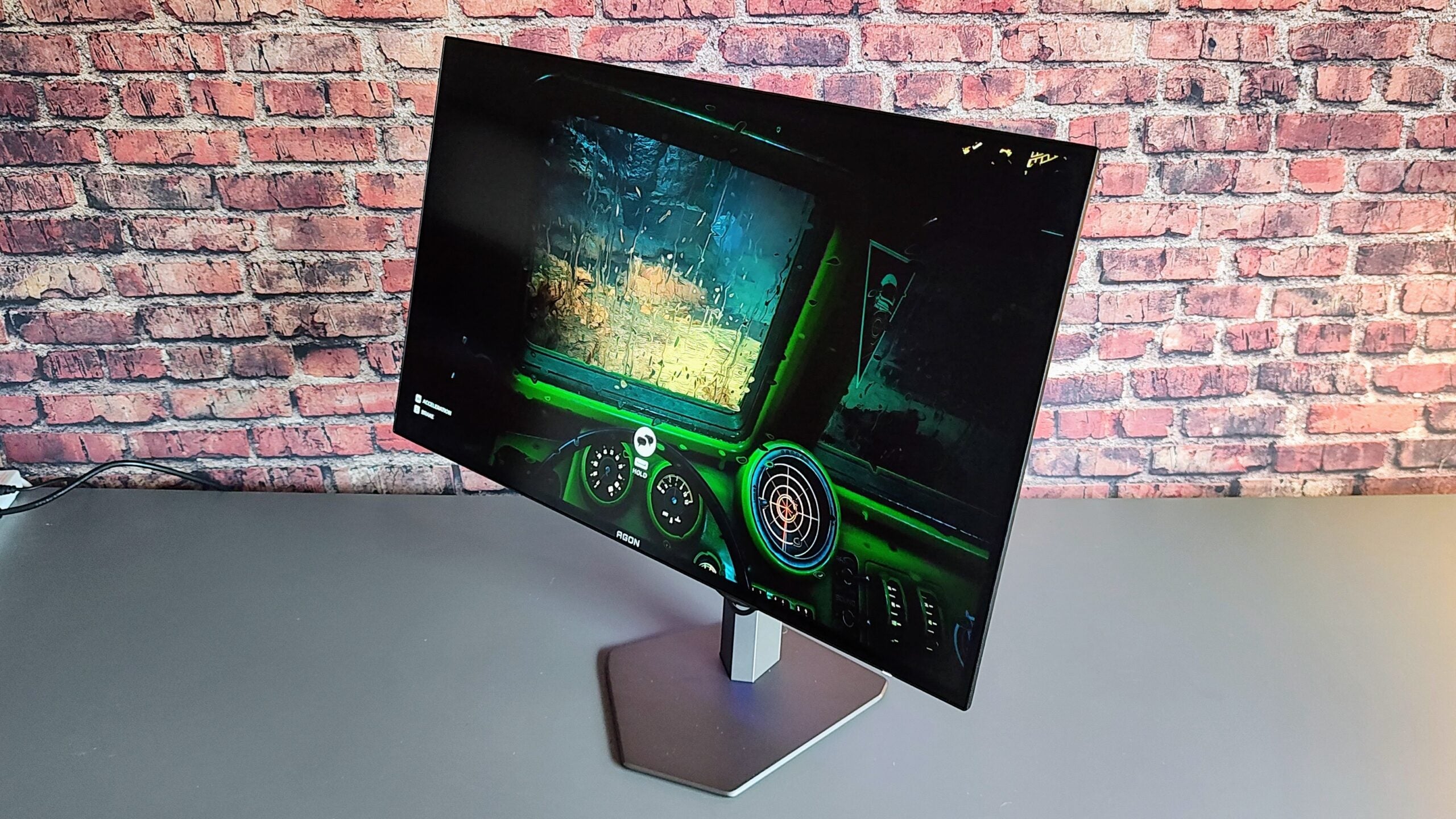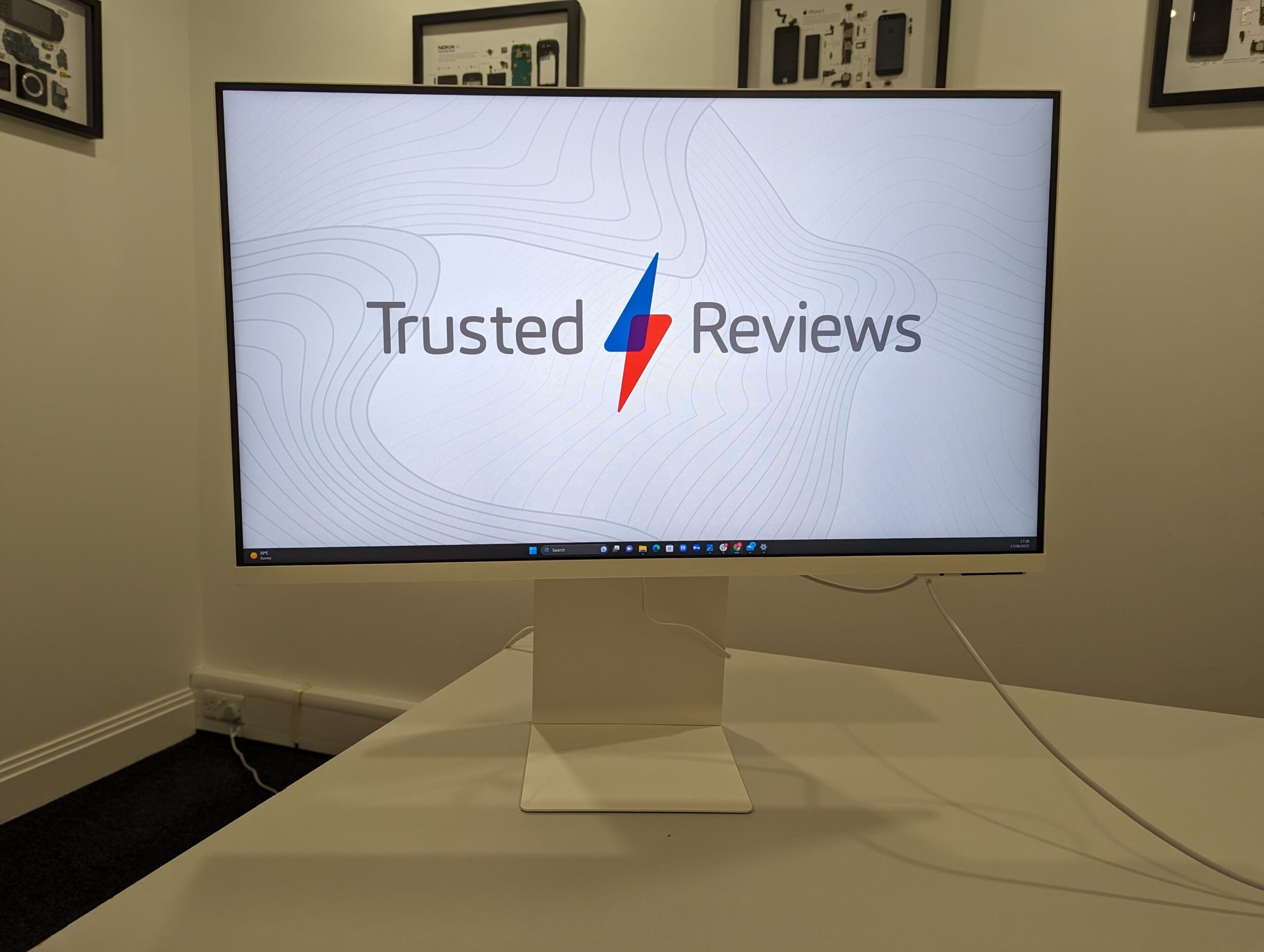MSI MPG Artymis 273CQRX-QD Review
A superb Quantum Dot LED gaming monitor
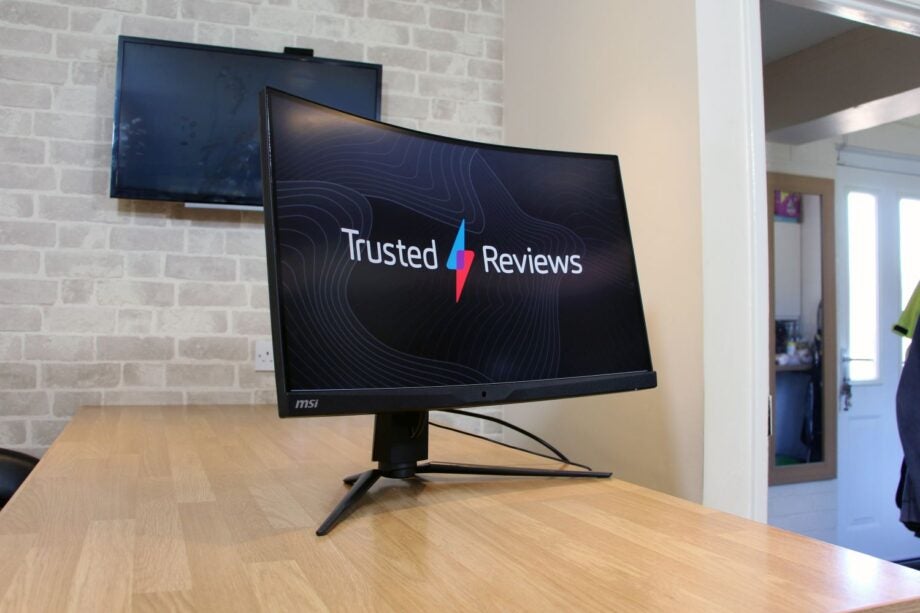

Verdict
The MSI MPG Artymis 273CQRX-QD offers vibrant, punchy imagery, a good mainstream specification, and lots of features – it’s a well-balanced option. That said, eSports fans should look elsewhere.
Pros
- Superb contrast performance
- Good mainstream colour accuracy
- Lots of features
- Well-balanced specification
Cons
- Mediocre build quality
- Some ghosting evident
- No real HDR ability
Availability
- UKRRP: £499
- USARRP: $477
- EuropeRRP: €528
Key Features
- Quantum Dot LEDs deliver impressive vibrancyThe MSI’s colours are produced by powerful Quantum Dot LEDs, which means the Artymis delivers bolder colours, deeper black points and better contrast than its rivals
- A well-balanced specificationThe QHD resolution, 1000R curve and 240Hz refresh rate combine to create a well-rounded and immersive mainstream gaming experience
- Generous array of featuresA mouse bungee, headphone hook, KVM and HDMI CEC make it easy to game and switch between multiple devices, and the MSI offers decent adjustment options too
Introduction
The MSI MPG Artymis 273CQRX-QD is an impressive gaming monitor that tries to tick every box to satisfy mainstream players.
A quick glance at the specs list reveals that there’s plenty to like here: it’s a 27in Quantum Dot display with a 2560 x 1440 resolution, an immersive 1000R curve and a 240Hz refresh rate. For single-player gaming and everyday eSports, that’s a top-notch specification.
In terms of price, it’s competitive when compared to rivals. The Artymis arrives at $478 / £449 / €529 and, despite the lower price, it squares up against the Alienware AW2721D, which shares many of the same attributes for $759 / £699 / €749, and the Samsung Odyssey G7, which costs a flat $499 / £499 / €499 for its 27-inch variant.
Can this panel compete with the best gaming monitors, then, or does it falter as a result of its relatively low price?
Design and Features
- Absorbing gaming environment
- Quantum Dot LEDs delivers a contrast advantage over rivals
- Lots of features and adjustment, even if build quality is underwhelming
The MSI MPG Artymis 273CQRX-QD has the sort of specification that will impress in a highly competitive market.
The underlying Quantum Dot technology is a great place to start. These LEDs emit pure blue, red and green light to create bolder, stronger colours. MSI reckons that this technology means the Artymis can render 100% of the sRGB colour space and almost all of the DCI-P3 gamut with more punch than traditional displays.
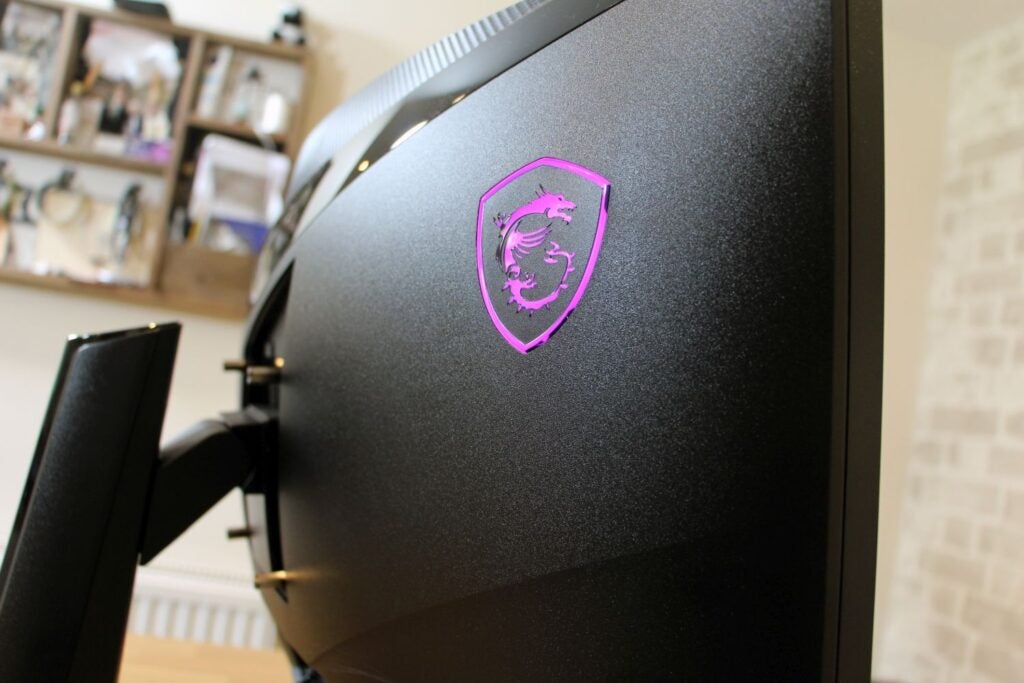
The 2560 x 1440 resolution delivers a crisp experience over conventional 1080p displays, and it won’t prove as graphically taxing as a 4K panel. That said, you should still be aware of GPU demands of the games you want to run – an Nvidia GeForce RTX 3070 will run most single-player games at a smooth 60fps, but you’ll need an RTX 3080 or something better to play all games at their top settings, or to run eSports titles alongside the 240Hz refresh rate.
That 240Hz refresh rate uses AMD FreeSync Premium Pro, which means you can use AMD and Nvidia graphics cards here. That refresh rate will sate single-player gamers and most eSports fans – you’ll only want to opt for 360Hz if you’re a top-tier competitive player. Similarly, the 1ms MPRT response time will be good enough for most gamers, but you’ll want a 1ms GtG monitor if you’re an eSports fanatic.
MSI has opted for a VA panel with a 10-bit colour gamut – a decision that should result in great contrast; but possibly at the expense of colour accuracy. The MSI adheres to VESA DisplayHDR 400, but that is likely to deliver only minimal gains in HDR games, and it’s an underwhelming specification at this price.
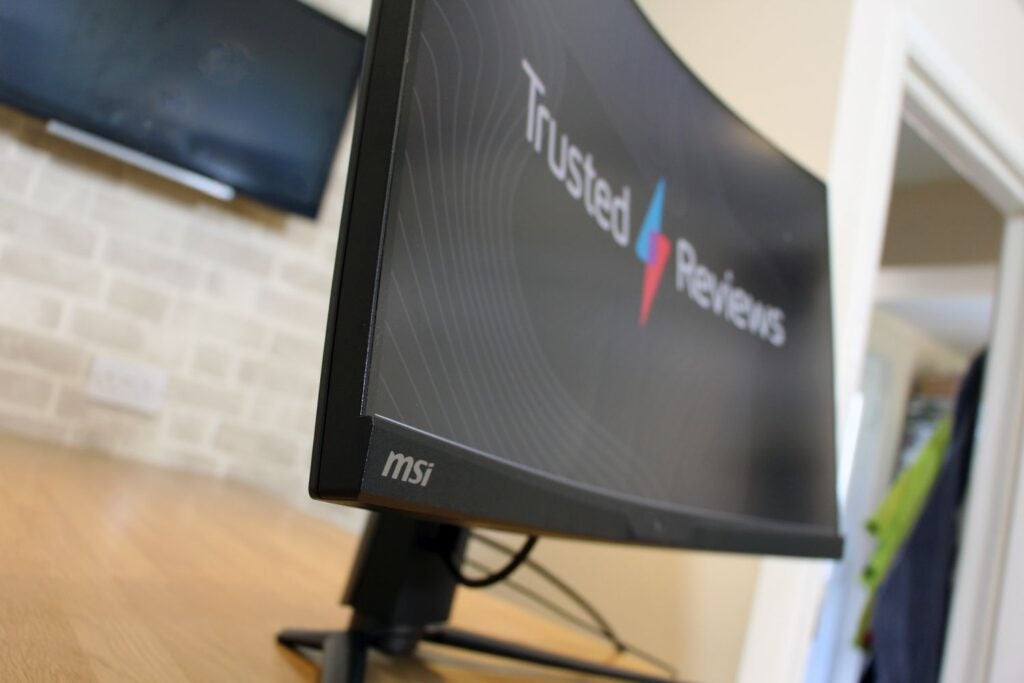
Nevertheless, the MPG Artymis 273CQRX-QD competes well with rivals. The Alienware AW2721D is pricier and its IPS display matches the MSI for resolution and refresh rate, but it’s only delivers a 3ms response time, it doesn’t use Quantum Dot LEDs and it isn’t curved.
The Samsung Odyssey G7 matches the MSI for resolution, refresh rate, curve radius and screen size, and it uses a 10-bit VA display without Quantum Dot internals.
The MSI is competitive on the inside, but on the outside it’s typical gaming fare. At the front, you’ll find slim bezels and a base with spindly metal legs, and at the rear there’s textured plastic and plenty of RGB LEDs. Build quality is fine if you want to stand the MSI on a desk, but the rear plastic is too weak to inspire confidence for frequent travel – the Alienware and Samsung screens are both far sturdier.
MSI’s RGB LEDs are adjustable and can be synchronised to gameplay, although the lights aren’t quite bright enough to provide proper ambient lighting – unless you’re gaming in the dark.
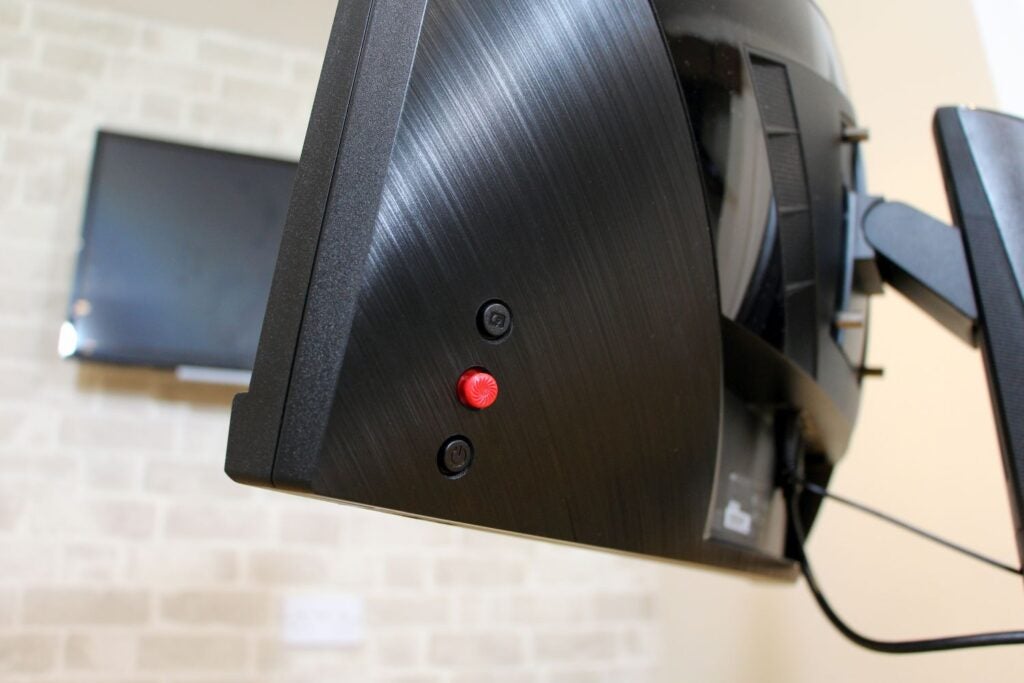
Get beyond the typical gaming design, and there’s more to like. The Artymis offers 100mm of height adjustment, tilt and swivel movement is included, and it supports 100mm VESA mounting. Its weight of 6.6kg is modest, too. The Alienware and Samsung both come with more adjustment, but the range of movement here should be sufficient for most people.
At the front of the monitor you’ll find a mouse bungee, on the side there’s a headphone hook, and at the rear there’s a cable-routing cavity. A snappy joystick navigates the responsive, straightforward on-screen display, and MSI’s Gaming OSD app enables adjustment from within Windows.
Elsewhere, the MSI has a KVM (Kernel-based Virtual Machine), so users can control PCs and laptops with one set of peripherals. The inclusion of HDMI Consumer Electronics Control (otherwise known as HDMI CEC) means users can wake up the display with their PS5 or Nintendo Switch controllers.
Around the rear, the monitor serves up two HDMI 2.0b ports, a DisplayPort output, two full-sized USB 2.0 ports and a USB-C connection with 15W of power delivery. That’s a reasonable selection, although the ports all face downwards, making them tricky to reach. Despite that, it’s a great set of features.
Image Quality
- Sensational contrast, depth and vibrancy
- Rock-solid colour quality
- Decent refresh rate performance
The Quantum Dot LEDs have an immediate impact: out of the box, the MSI paired a 186-nit brightness level with a stonking black point of 0.06 nits. Those figures create a mighty contrast ratio of 3100:1, and that translates as incredible depth, fantastic vibrancy and a hefty amount of punch from this panel.
That contrast ratio and black point instantly outpace the IPS panel in the Alienware and the VA hardware inside the Samsung – those screens had contrast ratios of 1022:1 and 2035:1 respectively.
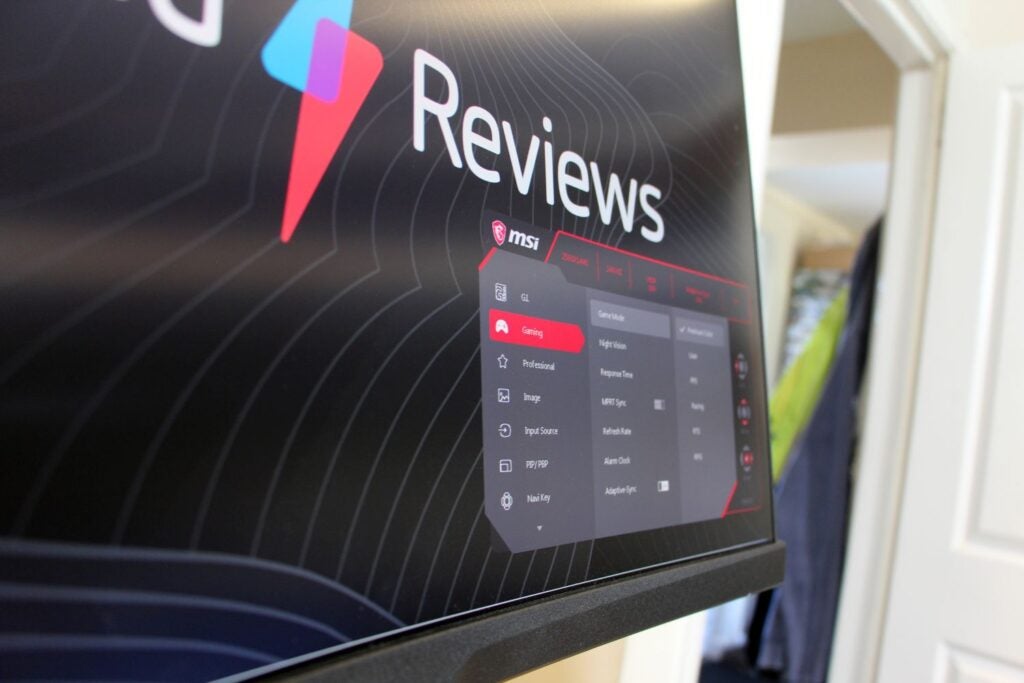
MSI’s panel managed a maximum brightness level of 432 nits while maintaining its excellent contrast performance, so there’s plenty of scope for running the display effectively under bright lights. The monitor keeps things uniform, too – its peak backlight variation of 9% is excellent, beating the Alienware.
The Artymis hit an average Delta E of 2.83 with a colour temperature of 6449K. The latter, in particular, is especially impressive – and the MSI’s gamma average of 2.18 is rock-solid. Those results mirror the Samsung but fall slightly behind the Alienware, which offers IPS technology – but you won’t notice the difference when gaming, only in colour-sensitive work applications.
The Quantum LEDs helped the MSI panel deliver great gamut coverage figures. Its sRGB coverage level of 98.7% and volume of 139.8% means that every shade needed by mainstream games is rendered with vibrancy, and those figures mirror the Alienware and Samsung monitors.
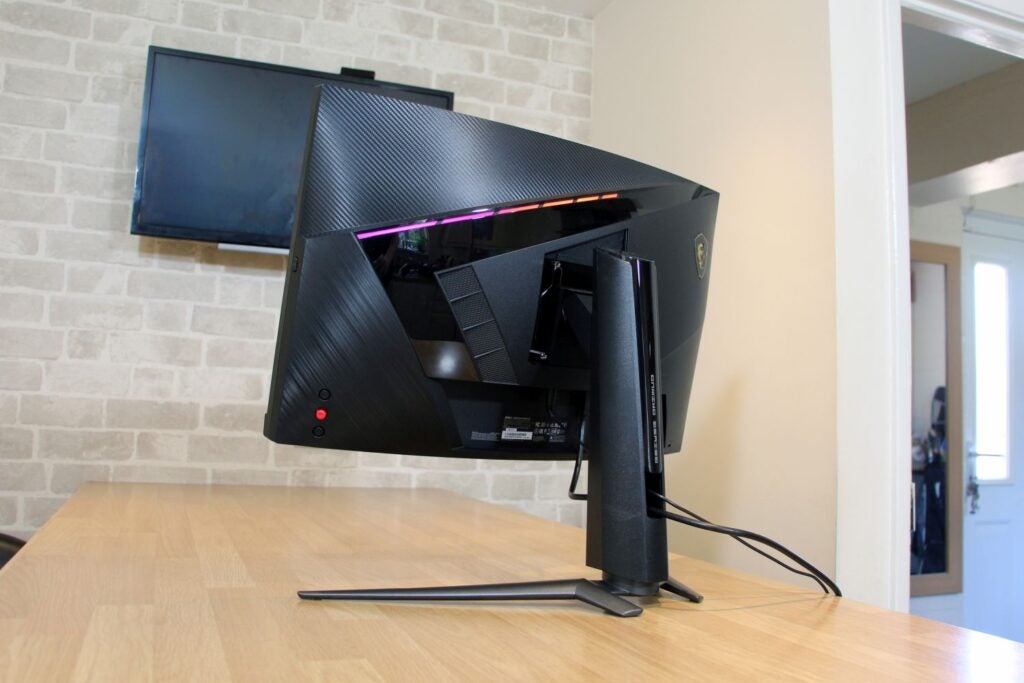
The MSI produced 91.1% of the DCI-P3 gamut at 99.9% volume, so you have the breadth of colour here to play HDR games – even if the lack of sophisticated dimming and the relatively modest peak brightness mean you don’t see much improvement in HDR titles. If HDR is important to you, the Samsung and Alienware are both better. The MSI’s Adobe RGB coverage level of 87.8% is only moderate, and if you want to handle content creation in this space then you should also look at different options.
The MSI’s 240Hz refresh rate performance is reasonable. Fast-moving games are crisp and smooth here, so you’ll have a good time playing fast-paced, single-player games or eSports titles. That said, the monitor isn’t perfect: I noticed significant ghosting when objects moved on darker backgrounds. As a result, this display seems better-suited to lighter titles and single-player games, where pushing the refresh rate isn’t quite as important.
If you want to play darker games then the Samsung does a better job of eliminating ghosting, albeit without the MSI’s huge contrast. A 360Hz screen would be the best option, if you’re really serious about eSports.
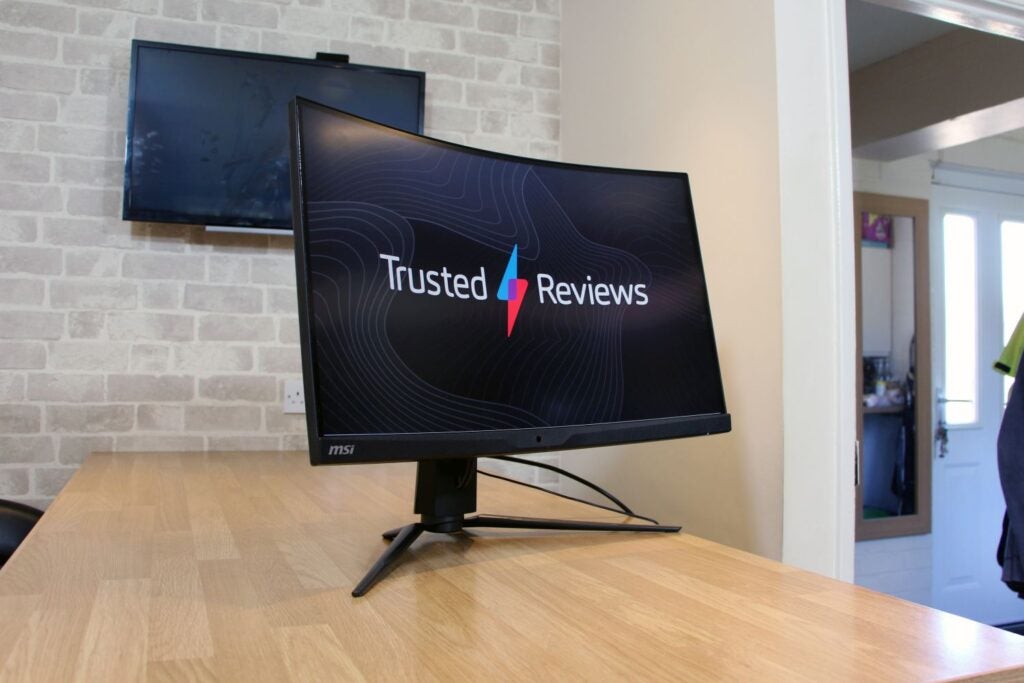
The MSI has three different response time modes, but they hardly make any difference to gameplay – the default option is fine. Don’t use MPRT Sync, either; it doesn’t eliminate ghosting, it makes images less distinct, and with it engaged you miss out on lots of other settings.
I’d also advise that you avoid any of the genre-specific screen modes. The FPS and Racing options try to make edges more crisp, but they simply appear pixellated and discoloured; the RTS mode is bright and cool to the point where you lose detail.
Despite that, there’s plenty to like here in terms of image quality. The panel’s refresh rate performance is good enough for high-quality everyday gaming, especially in single-player titles, and the huge contrast and depth figures mean you get more punch and vivacity than most other monitors – the Samsung comes close, but this screen is miles ahead of the Alienware.
For a proper HDR experience or the speed required for eSports, you’ll need to look elsewhere; but for $478 / £449 / €529, the MSI MPG Artymis 273CQRX-QD is a versatile and impressive mainstream choice.
Latest deals
Should you buy it?
You want a bold, feature-packed panel for mainstream gaming:
Quantum Dot LEDs deliver superb colours and contrast in this monitor, and elsewhere the MSI offers great features and an immersive curved design – it’s an excellent all-rounder.
You’re a keen eSports fan or want to enjoy HDR gameplay:
The slight ghosting and 240Hz refresh rate mean a 360Hz/1ms G2G screen is better for eSports players, and HDR performance is better elsewhere too.
Final Thoughts
The MSI MPG Artymis 273CQRX-QD is a great mainstream monitor. It delivers excellent image quality with plenty of vibrancy and nuance, and that’s paired with a great curved design and lots of features. It’s a compelling and versatile option, although top-tier eSports players should still look elsewhere.
How we test
We use every monitor we test for at least a week. During that time, we’ll check it for ease of use and put it through its paces by using it for both everyday tasks and more specialist, colour-sensitive work.
We also check its colours and image quality with a colorimeter to test its coverage and the display’s quality.
We use as our main monitor for at least a week.
We used a colorimeter to get benchmark results.
Used our own expert judgement for image quality
FAQs
You can use the DisplayPort socket and USB-C port to run the MSI at 240Hz, but the HDMI socket supports only 144Hz operation.
The MPG Artymis 273CQRX-QD comes with a one-year warranty.

